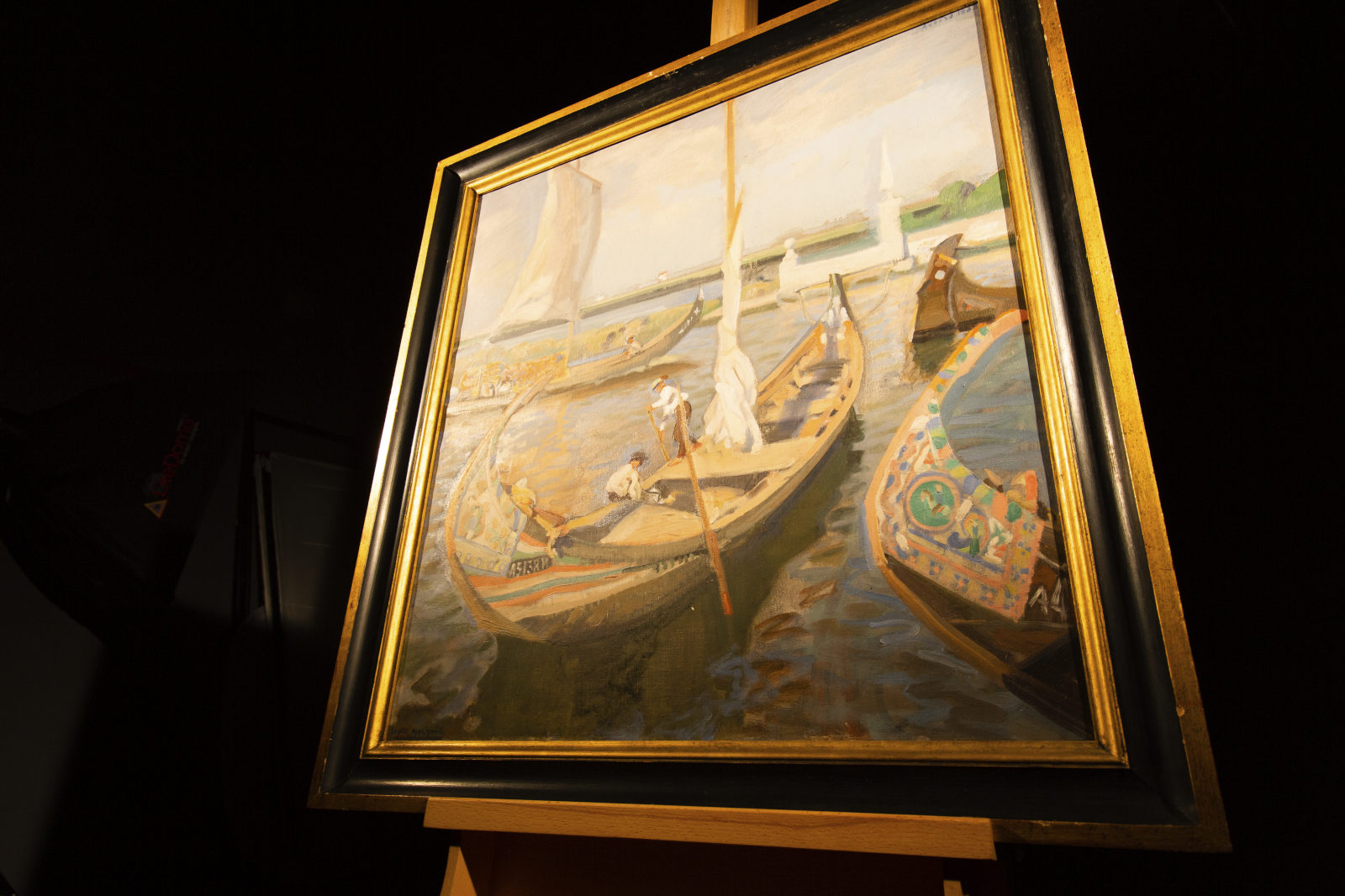
As you walk through a museum, it can sometimes be hard to imagine that objects and artifacts were used out in the world before they became part of a collection. They weren’t made to be in a museum, but after their original intended lives, they live on again for us to learn from.
A Boat out of Water
In the International Small Craft Center at the Mariners’, there’s a Portuguese Moliceiro, or Kelp Boat. This boat was one of the first 5 in our collection, accessioned in 1934. This moliceiro had a life on the water, felt the sun’s rays and was used and loved by the kelp gatherers. It would be loaded with seaweed that was destined for farms where it nurtured the soil and the crops. And while it is a beloved part of our collection and is used to help tell the global maritime story to which we are all connected, it can feel out of place – a 46-foot long boat, inside of a building.
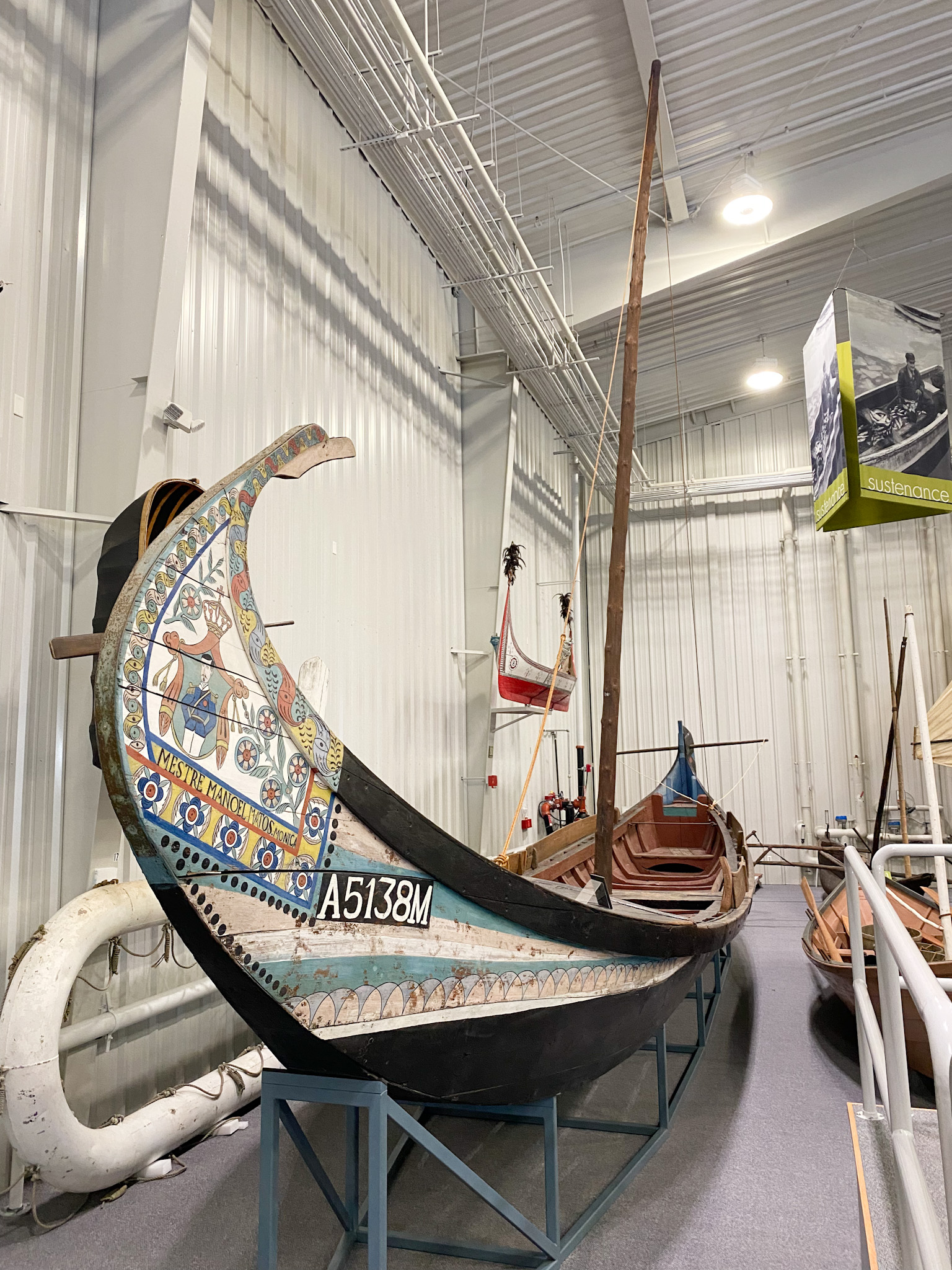
A Day on the Canal
But Art can help us make sense of these objects in the real world, give them permanence and placement, and breathe life back into them. Which is exactly what José María López Mezquita has done with this piece. This 1933 oil on canvas simply titled “Portuguese Kelp Boat” transports us back in time to the western coastal town of Aveiro, Portugal and a sunny day on the canals. The periwinkle blue of the sky is only obstructed by a few fleeting clouds which have been brushed into it with gestural strokes, that hint at the shape, but don’t define them. The calm water of the canal dances in the sunlight with the reflection of the sky and the many moliceiros which are out hard at work.
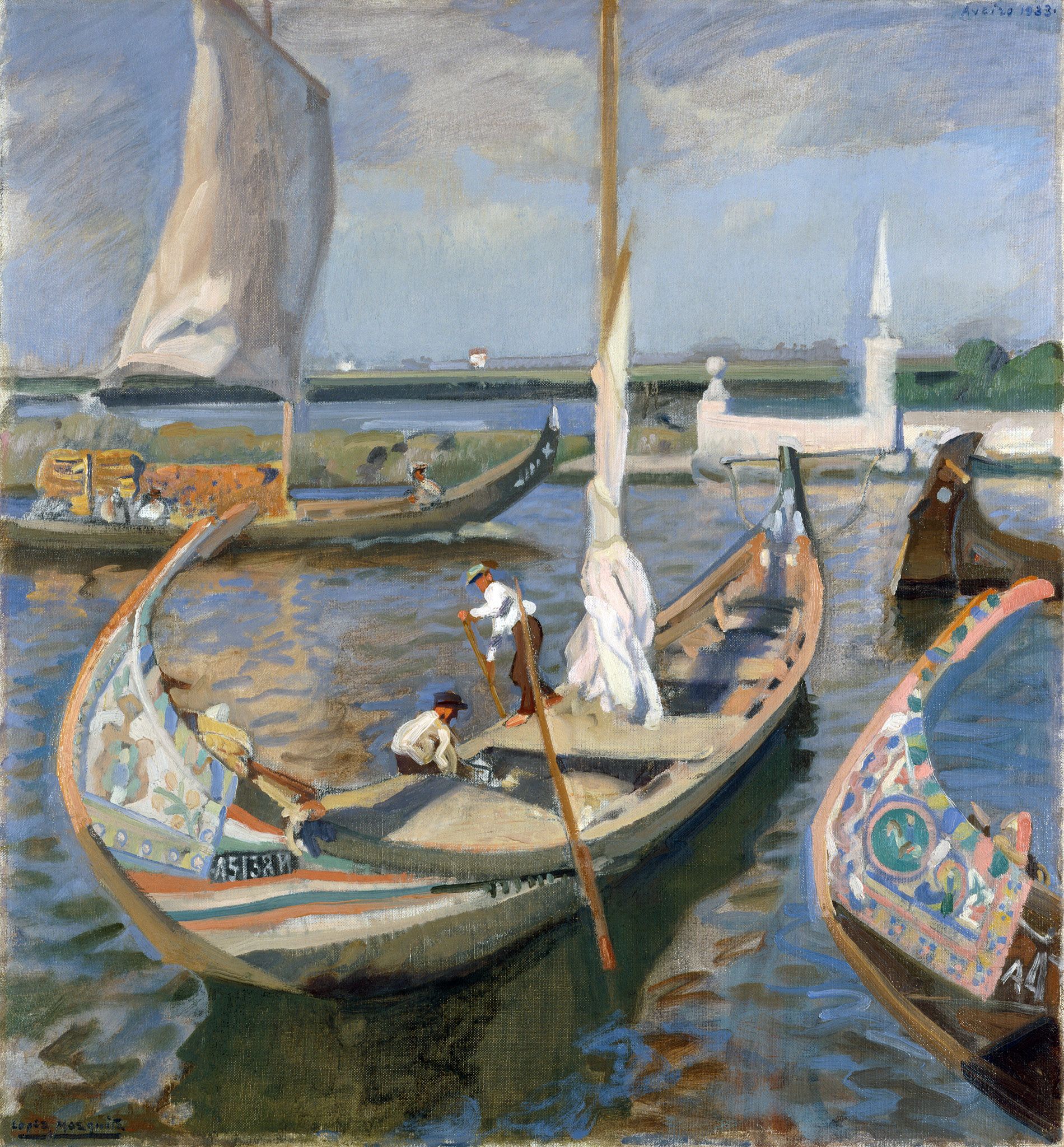
Seeing Double
One of the first things that I noticed when I saw this piece was this identification number and the painting on the raised bow. It stuck in my mind and I knew I had seen it somewhere and couldn’t seem to place it.
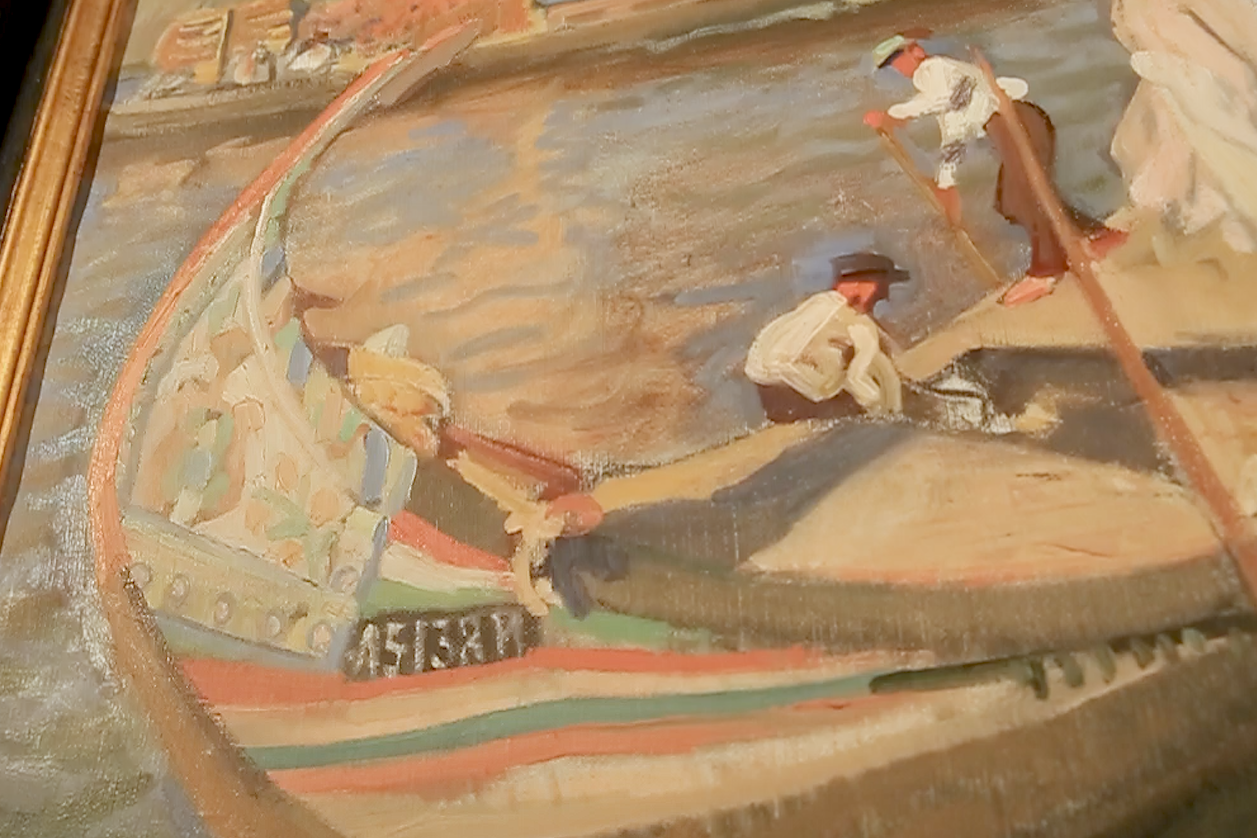
And then it hit me. This is a painting of OUR moliceiro. So I rushed over to the Small Craft Center – in my three years at the museum, I’ve walked past this boat dozens of times but this time, I felt like I was seeing it for the very first time – really seeing it. Not as a boat in our collection but like I was seeing a friend in person. I saw it not as it IS but as it WAS and then I could picture it out on the water, living it’s pre-museum life. Art has the amazing power to help us see things in a whole new light.
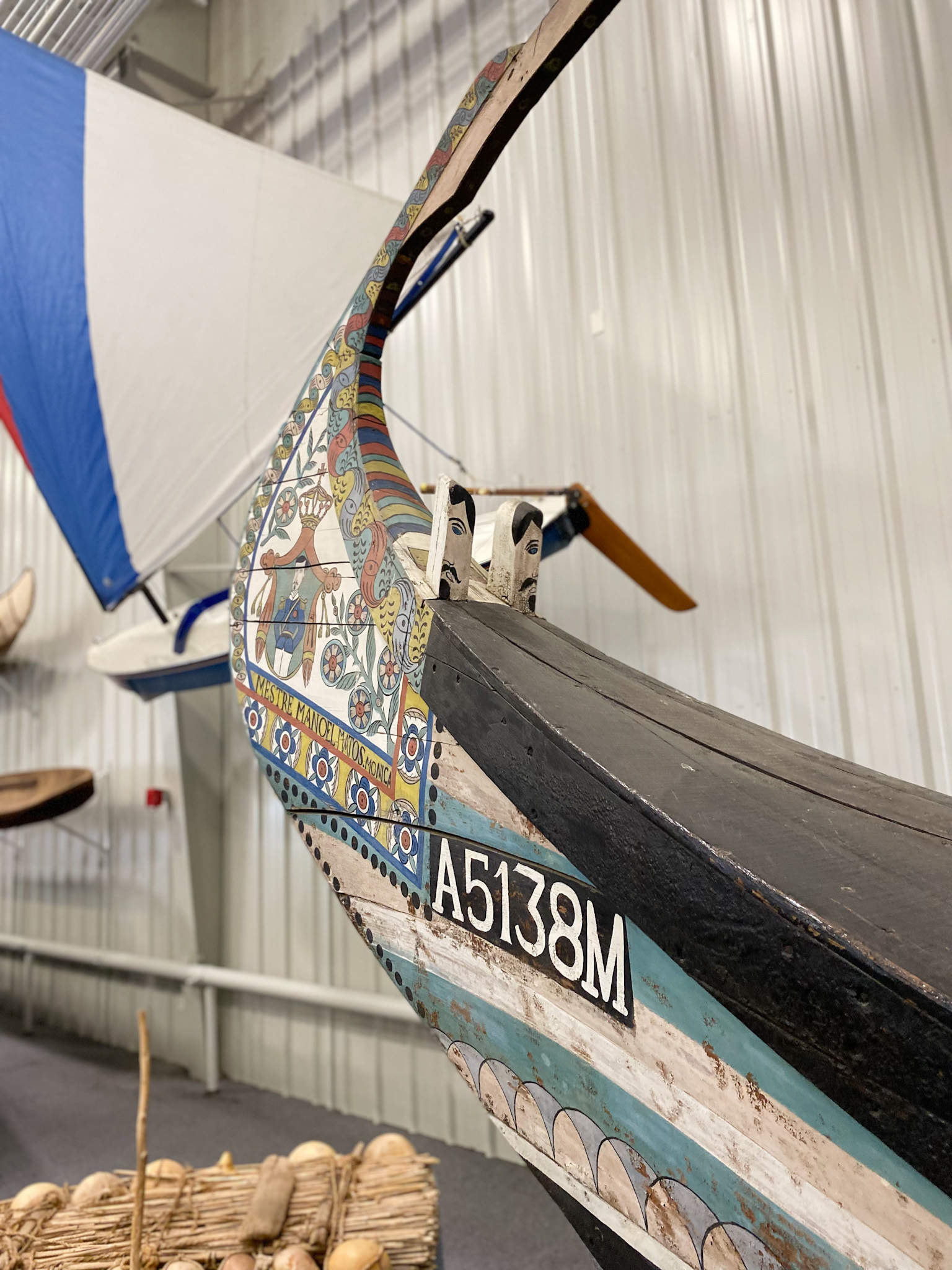
An Origin Story
José María López Mezquita was a famous, prolific Spanish Portrait painter, born in Granada Spain in 1883. He was trained in art from the age of 10 and showed great talent. At age 16, he moved to Madrid to study it full time and won a gold medal at a National Exhibition at the age of 18. From there, he skyrocketed – he traveled on a scholarship all across Europe and later to the United States where, upon hearing of one of his portrait exhibitions in New York, Archer Huntington – the founder of the Mariners’ sought out the artist. Mr. Huntington commissioned López Mezquita to do several series of paintings. One of these commissions was to travel back to Spain and Portugal and paint scenes of Hispanic life and culture. This work is from that commissioned series.
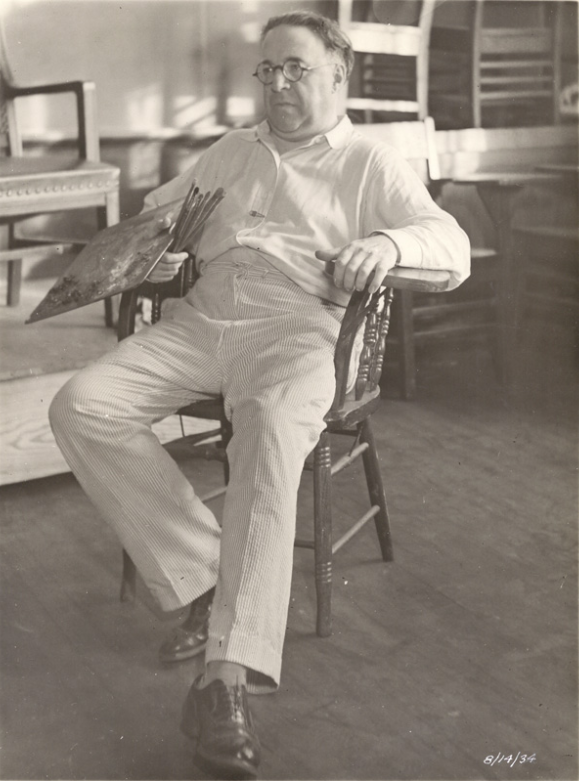
The above photograph shows the artist at the Mariners’ while he was visiting to paint another series of commissions – this time it was his wheelhouse – portraits of several original board members.
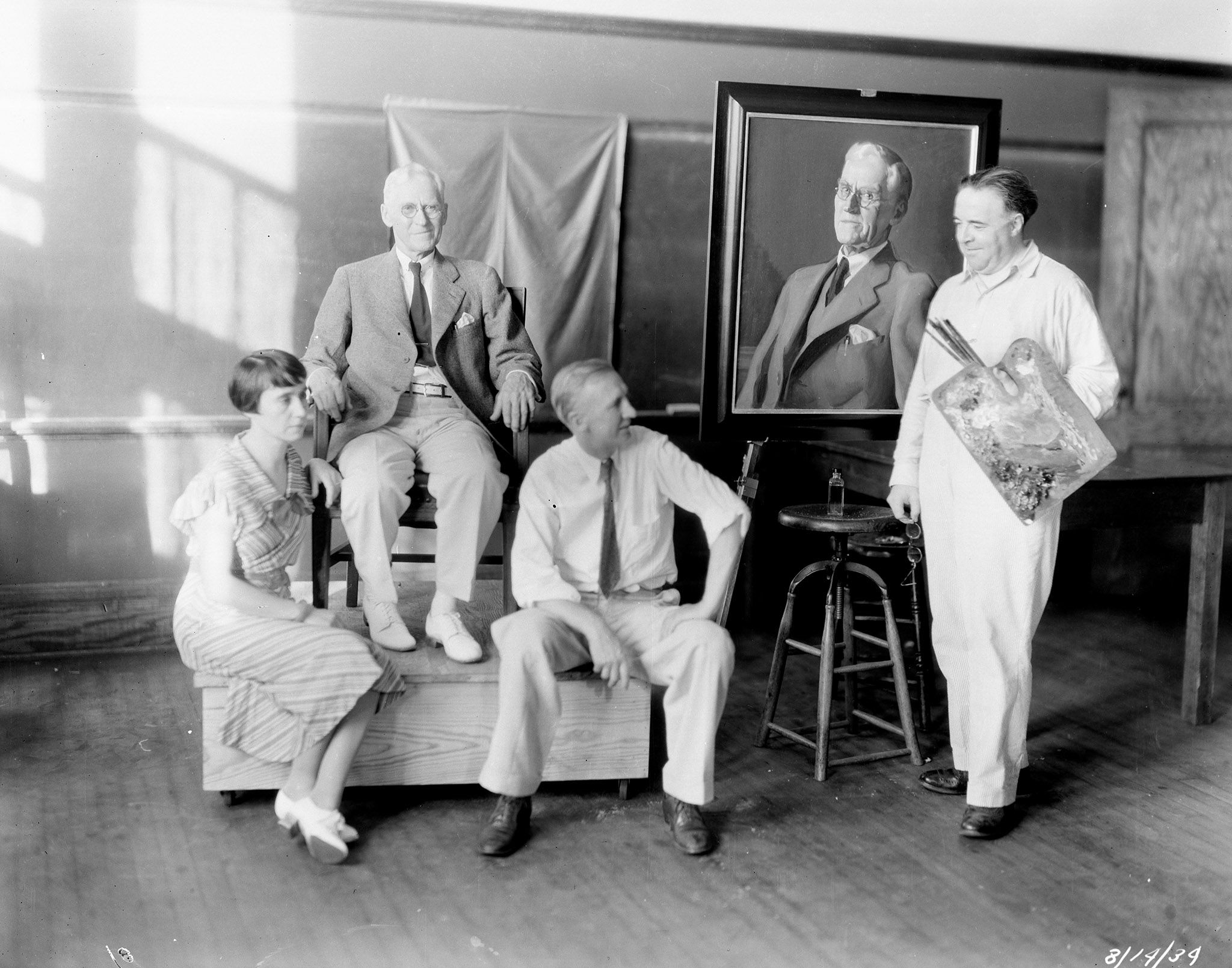
From my research, I can only find 6, specifically maritime works by the artist – we have 5 and the Hispanic Society (also founded by Archer Huntington) has the 6th. Out of the 5 that we have, this work in particular stuck out to me – the style is impressionistic with hints of later styles and while some of the other paintings of the small craft take on the hints of impressionism, this one was more so. Impressionism is a popular, beloved style that spans the second half of the 19th century and was prolific across Europe, the UK, and a bit later, the US. It’s classified by quick, expressive brushstrokes that capture light and atmosphere, as well as the use of bright and playful colors.
Spanish Impressionism & López Mezquita
This work was created 30 years after the recognized period of Impressionism, but during a time that this style was popular in Spain and Portugal. The impressionistic style in these works varies greatly from his portraits which are an amazing balance of expressive brushstrokes that capture the essence of a person as well as a polished style of portraiture that realistically depicts the sitter.
There are a number of areas where we can actually see the canvas through the paint. This “unfinished” style is also characteristic of impressionism as many artists would paint works quickly “en plein air” which means outside at the site of the subject.
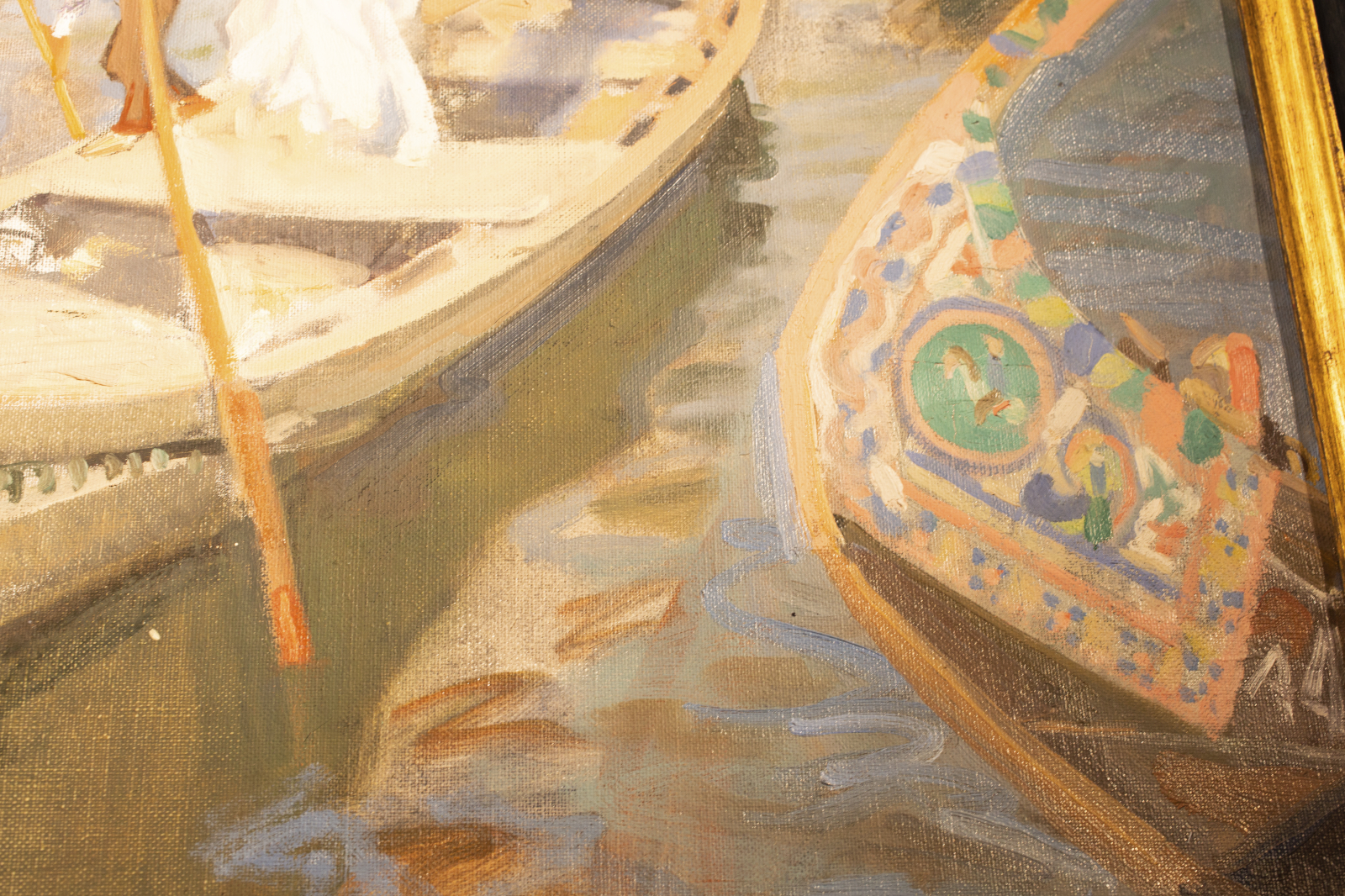
The rise of artists actually painting en plein air came from the introduction of manufactured paints that came in tubes. While this can seem like a simple thing to us today, this truly changed the art world as an artist was no longer confined to their studio whilst using paint. They also did not have to mix paints themselves which made the medium more accessible to those who wanted to paint. Innovation can be a very good thing for one industry, while being the death of another. Painting en plein air allowed the artist to truly capture a precise moment in time which is exactly what we have here.
A Different Way of Seeing
In the large, quick brushstrokes, there is a unique motion that is not defined but rather the way you might see the motion of this scene if you squint your eyes. The world moves around you in swashes of light and color, outlines of people, trees, and boats. The water swirls with color and glints in the gentle sunlight. You feel a light breeze on your skin and hear the sound of boats moving through the water.
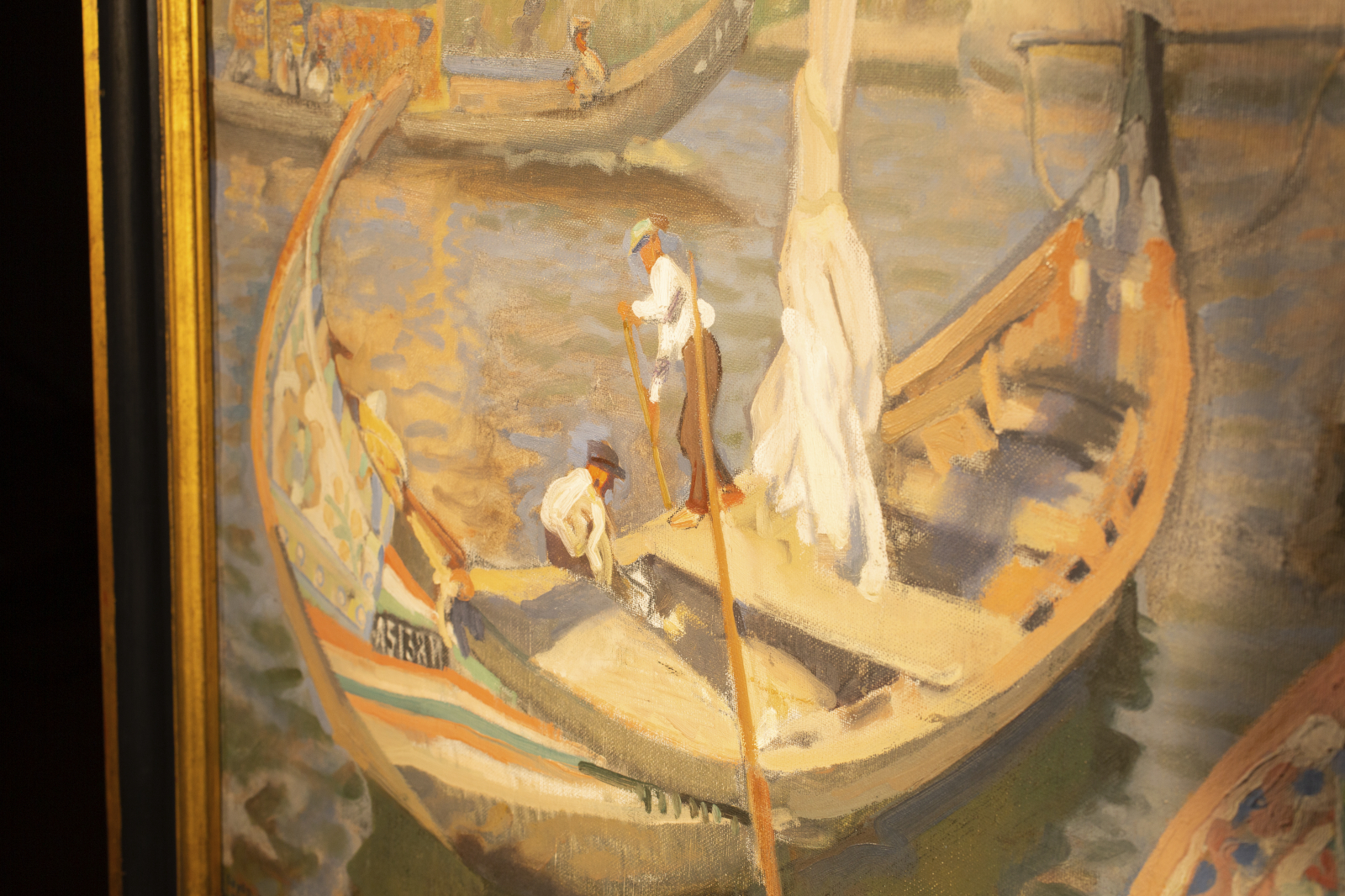
The striking white of the kelp gatherer’s shirt next to the secured sail draws our eyes directly to the subject – our moliceiro and its gatherers. And although the standing gatherer is really just a few brushstrokes of paint, the artist has positioned him in such a way that makes us feel like he’s looking at us, giving us the opportunity to connect with him, if even for just a short while. He sees us there, standing with López Mezquita while he works to capture this scene – this fleeting moment on this beautiful day.
The Changing World
At the time when this work was painted, and as the 20th century continued, scenes of kelp gatherers working in their moliceiros became rarer as the kelp- fertilizer industry was replaced by chemical fertilizers. This moment, this scene, this industry was disappearing. As was the life on the water of our beloved moliceiro.
But while this Moliceiro may not have been made to go in a museum, while it already lived its first intended life, by being here at The Mariners’ Museum and Park it gets to live again. Together with this painting, it gets to tell us its story, about this industry and the gatherers who loved it, how it helped to nourish the crops that fed the nation or were traded to other countries. We see its original purpose, its heritage and by being here, by seeing this boat and appreciating its life and its story as told through this painting, we are given the opportunity to become part of its second life.
Be sure to watch the full episode here and stay tuned for new episodes the first Friday of each month!